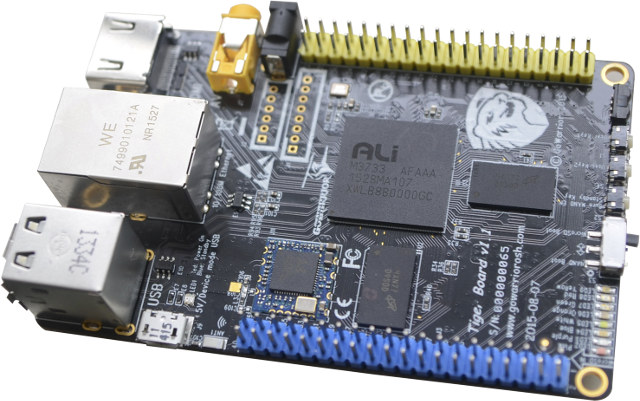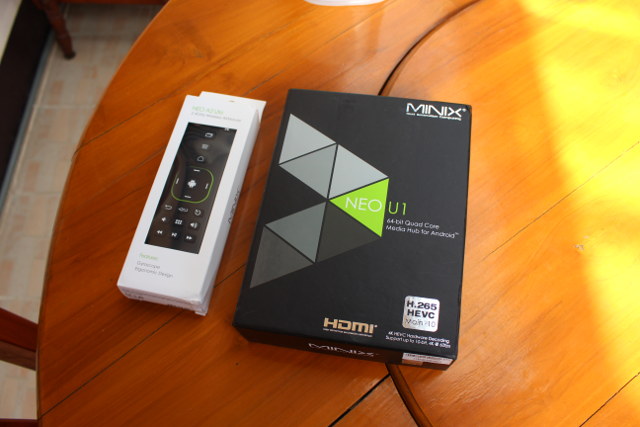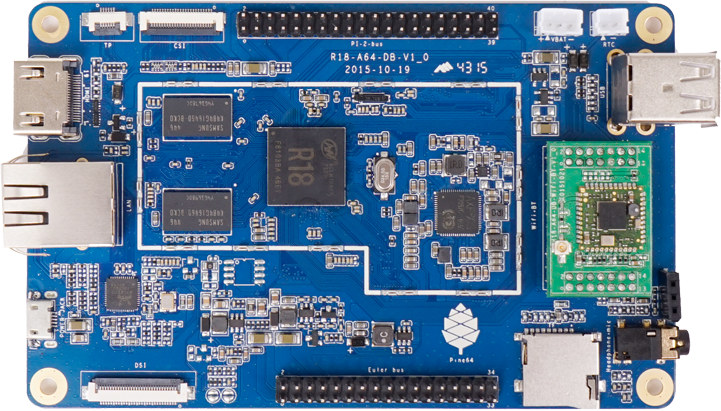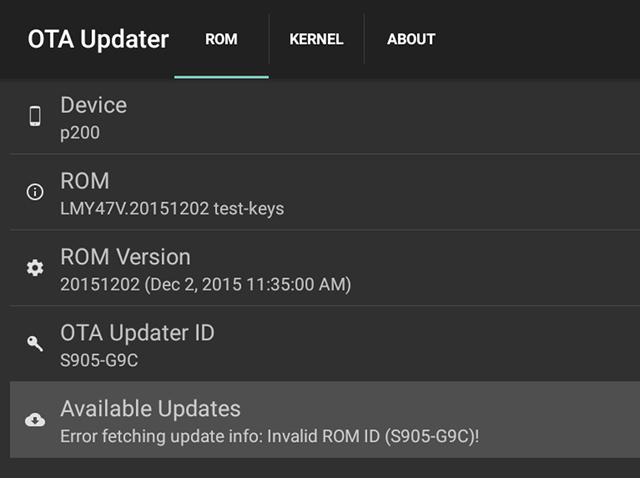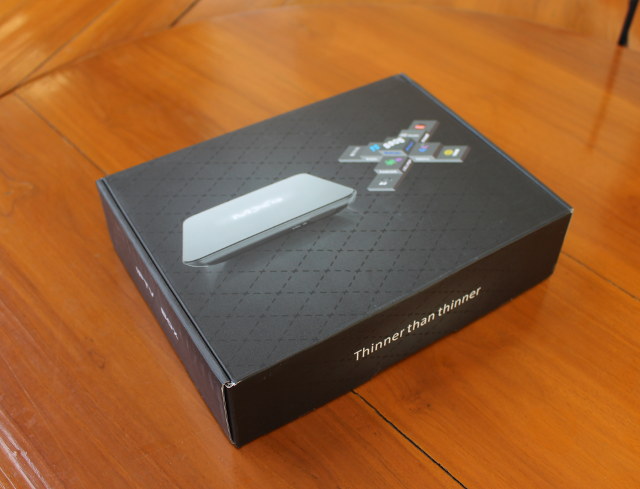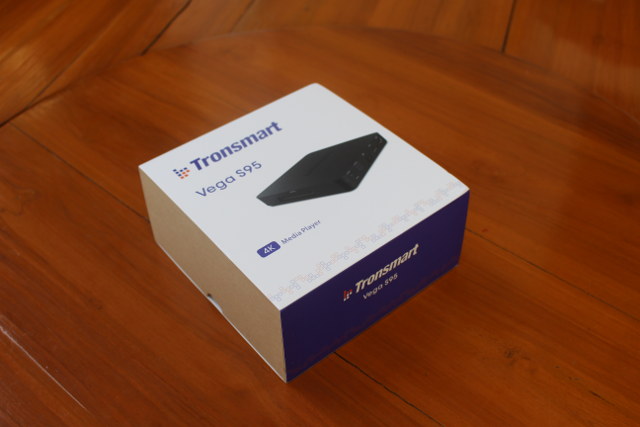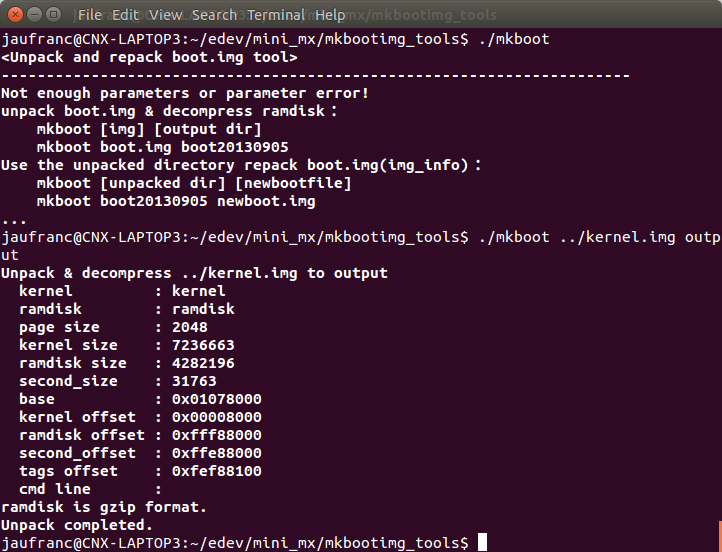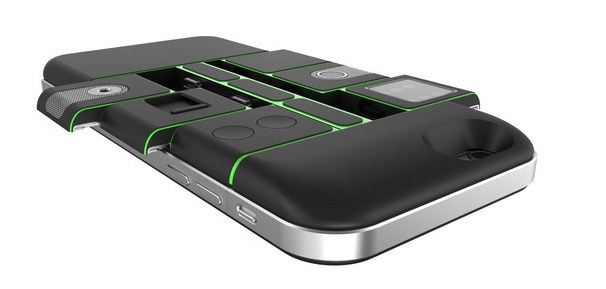There was a time when development boards were really hard to get for individuals with companies not wanting to waste their time with hobbyists, but the maker revolution changed all that, and now many companies want to get involved in “open source” board for the developer’s community. The latest board trying to emulate the Raspberry Pi is GoWarrior Tiger powered by ALi M3733 dual core cortex A9 processor with 1GB RAM, 4GB Flash, Ethernet and WiFi, HDMI and AV output, and two 40-pin expansion headers. Tiger board specifications: SoC – ALi M3733-AFAAA dual Cortex A9 processor @ 1.0 GHz with ARM Mali-400 MP2 GPU System Memory – 1GB DDR3; dual channel 1600 MT/s, 800MHz Storage – 4GB on-board NAND Flash + micro SD slot Video & Audio Output – HDMI 1.4 port up to 1080p, with support for HDCP and CEC, 3.5 mm AV jack Connectivity – 10/100M Ethernet, 802.11 […]
MINIX NEO U1 Android Media Hub and NEO A2 Lite Air Mouse Unboxing and Teardown
MINIX NEO U1 Android TV box, which the company prefers to call “media hub for Android”, has been announced last week, and has started shipping. The company sent me one sample of the Amlogic S905 device, as well as MINIX NEO A2 Lite air mouse which can be included with the box as part as some bundle. I’ll check out the media hub and air mouse today, as well as get a close look at the internals, before testing the device, and published a full review of MINIX NEO U1 lateron. MINIX NEO U1 Unboxing MINIX sent me the packages via Fedex and I received it within 2 or 3 days. The devices comes with a simple infrared remote control, a micro USB to USB cable, a USB OTG adapter, an HDMI cable, a WiFi antenna, a 5V/3A power supply, a setup guide in English, German, Chinese and Russian, and […]
PINE A64 Development Board Kickstarter Campaign is Up
As previously announced, PINE64 $15 64-bit ARM Linux computer was due to launch on December 9, and the Kickstarter campaign is now up, and the shipping costs are $7 to the US, and $12 to the rest of the world. The name have changed to PINE A64 and PINE A64+ since the first announcement, but the specifications have mostly not changed for th two boards with an Allwinner quad core Cortex A53 processor, 512MB to 1GB RAM, a micro SD slot for storage, Gigabit Ethernet, HDMI 1.4, USB ports, and some other expansion headers for I/Os, displays or cameras. The PINE A64+ however now has an option for 2GB for $29, and we’ve got a bit more information about optional modules and accessories: Wireless module with WiFi and Bluetooth adapter Zwave adapter 7″ LCD touchpanel (PINE64+ only) Dry contact I/O board 5MP MIPI CSI camera Various sensors Various remote controls […]
OTA Updater is an Open Source App to Update Android Firmware
Yesterday, I received G9C TV box, but since Google Play is not exactly working perfectly, I decided to postpone the review until I get a new firmware. I did notice however that the firmware did not include Update&Backup app as found on K1 Plus, but instead an OTA Updater app, also called OTA Update Center, that happens to be an open source app with source code available on Github. Android already has a framework for OTA updates, but that app could make it easier implement OTA firmware updates for your own platform, or simply because you want to push your firmware, or as some people called them “ROM”, to multiple users. The software will allow you to update the “ROM” and kernel as long as both updates are configured correctly, which is apparently not the case for S905-G9C… The setup instructions are quite simple, explained on OTA Update Center website, […]
MXQ S905 / G9C 4K Android Media Player Unboxing and Teardown
Beside Tronsmart Vega S95 Telos, I’ve received another Amlogic S905 device with MXQ G9C, which was the first Amlogic S905 TV box to have surfaces in the news back in June, and a sample has been sent to me by Shenzhen Tomato. Since the company provides ODM/OEM services instead of catering to end users, the specs are flexible, but the device I received is with the default configuration namely 1GB RAM and 8GB flash, and with similar specs to Beelink MINI MX or KI Plus for example. Today, I’ll start by checking out the hardware, before reviewing the full package a little later. MXQ S905 / G9C TV Box Unboxing I received the parcel via DHL, with the device in a retail white brand package reading “MXQ”, “S905”, and “IPTV box”, with some features on the back such as Airplay, DLNA, Miracast, or Widewine, Playready, and Verimatrix. But I’m pretty […]
Tronsmart Vega S95 Telos TV Box Unboxing and Teardown
Tronsmart Vega S95 Telos is an Android mini PC powered by Amlogic S905 quad core Cortex A53 processor, but contrary to the two other S905 device I previously reviewed, namely K1 Plus and MINI MX, it’s not been designed for the ultra low end, as it comes with 2GB RAM, 16 GB eMMC flash, 802.11ac WiFi, Gigabit Ethernet, and a SATA port. GeekBuying sent me one sample for review, and I’ll start with some pictures of the package, device, and board, before running it through a full test procedure. Tronsmart Vega S95 Telos Unboxing I got the box via DHL in the following package with makes it clear it’s a 4K media player. The box comes with a simple IR remote control requiring two AAA batteries, an HDMI cable, a SATA cable for laptop drives, a 12V/2A power supply, and a user’s manual in English. The device looks somewhat like […]
How to extract kernel.img with mkboot script
As I tried instructions to install Linux on Amlogic S905 Android TV boxes yesterday, I wanted to extract kernel.img file found in Android firmware, but Google did not help that much until I found mkboot part of mkbootimg_tools scripts. But first let’s see how kernel.img is created… Google provide a Python script called mkbootimg that combine the kernel image (e,.g. zImage), a rootfs/ramdisk and the device tree (DTB) file with a command line that looks like:
|
1 |
./mkbootimg --base=0 --kernel_offset=0x01080000 --kernel ${KERNEL} --ramdisk_offset=0x01000000 --ramdisk ./${ROOTFS} --second ${DTBFILE} --output ./kernel.img |
However, AFAIK the company does not provide a “unmkbootimg” script, and mkbootimg can only be used to create kernel.img, not decompile it. But that’s what mkboot does, and it works for kernel.img and recovery.img. Let’s retrieve the necessary files first:
|
1 |
git clone https://github.com/xiaolu/mkbootimg_tools |
mkboot is a bash script so we can use it right away:
|
1 2 3 4 5 6 7 8 9 10 11 |
cd mkbootimg_tools ./mkboot <Unpack and repack boot.img tool> ---------------------------------------------------------------------- Not enough parameters or parameter error! unpack boot.img & decompress ramdisk: mkboot [img] [output dir] mkboot boot.img boot20130905 Use the unpacked directory repack boot.img(img_info): mkboot [unpacked dir] [newbootfile] mkboot boot20130905 newboot.img |
So it can be used both for unpacking and repacking kernel.img to/from the output directory. Let’s run the command […]
Nexpaq Modular Case Supports iPhones, Samsung Galaxy Phones and Other Smartphones
While Google is working on Project Ara modular phone, Nexpaq had the idea to leverage the existing user base and create a phone case accepting up to 6 modules and compatible with iPhone 6 and 6 Plus, Samsung Galaxy S5, S6, S6 Edge, Note4, and Note4 Edge as well as Oneplus One. If you don’t happen to own any of those models, the company also designed Batpaq modular power bank communicating with the phone via USB or Lightning cables, or Bluetooth. Each Nexpad case includes a 1000 mAh battery, slots for 6 modules out of a selection of 12: Battery module Amplified speaker USB flash card Breathalyser LED light Hot keys Laser Hot keys Air quality Temperature and humidity sensor 64GB backup SD card reader The company also claims that 300 idea of modules thanks to the community gathered with the Kickstarter campaign earlier this year, including make-up modules, barometer, […]


